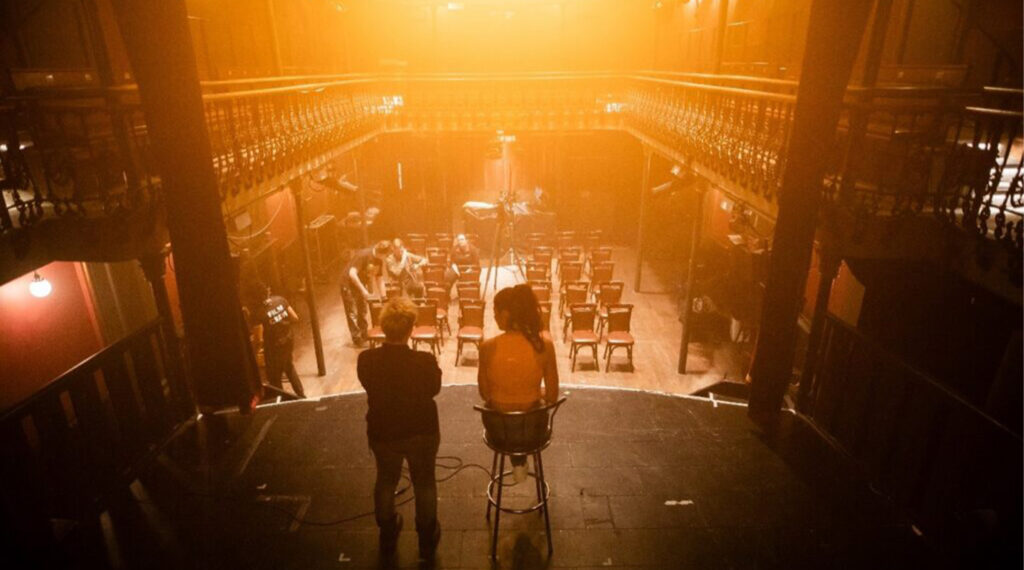Where there are shadows, there is light

John Ellerman Foundation began exploring the idea of setting up a Board Shadowing Scheme in 2021. We envisaged a six-month programme resulting in individuals from diverse backgrounds with lived experience of poverty joining our Board as active observers (i.e. without the ability to vote on decisions). We wanted to provide Shadowing Trustees with meaningful first-hand experience of being on a Trustee Board, including the opportunity to decide if Trustee Boards are a place for them.
As an endowed UK-based grantmaker providing multi-year core support to nationally significant work in the arts (including museums and galleries), social action and the environment, and in pursuit of our aim to advance wellbeing for people, society and the natural world with 100% of our assets, we reflect regularly on the effectiveness of our own governance, usually through things like trustee appraisals, trainings, closed session discussions, and away days. We also spend a lot of time reviewing the governance structures and processes of the organisations we fund, as well as other key stakeholders we work with.
We were further motivated to think about this when, in 2021, Reach Volunteering released their report ‘Trustee diversity: who is applying, and who is appointed?’ The report found that Charity Commission data shows that 92% of trustees are white, two-thirds are male and the average age is between 55 to 64. An issue that is exacerbated not by a lack of interest from diverse groups, but by recruitment processes, including closed recruitment processes. The report came on the back of research released a few years earlier in 2018 by the Association of Charitable Foundations showing that foundation boards were 99% white; that male trustees outnumbered women 2:1; that almost 60% of trustees were over 65, almost 75% of trustees were recruited informally and that foundation boards tended to be smaller, have longer terms of office and meet less frequently.
We weren’t alone in thinking about this issue, and were utterly inspired by the work of Paul Carbury, CEO and Ambreen Shah, Trustee at The Smallwood Trust (a small women and girls grantmaker), who set up their own Board Shadowing Scheme in 2021/22. Paul and Ambreen were incredibly generous with their time and advice and spoke to us in detail about the approach they had taken and why, as well as sharing the resources they had developed.
We didn’t end up launching our Board Shadowing Scheme until February 2024. The main reason we took our time is because we wanted to be sure that as a small team and board we had the capacity and capabilities to commit meaningfully to the Scheme.
Once the scheme was launched, things moved very quickly! We received thousands of views and hundreds of comments on our LinkedIn posts, along with a couple of articles being written about what we were doing in the UK charity sector press. It was clear that what we were doing had struck a chord with our peers.
We received 19 statements outlining why people wanted to join the scheme, and in May 2024 we were joined by three Board Shadowing Trustees – Charlotte Leask, Hirra Adeogun Khan and Nell Hardy. All three have entered into the scheme with such curiosity, enthusiasm and understanding, and we are so pleased to be working with them.
The scheme offers Charlotte, Hirra and Nell with the option of attending four Board meetings, sub-committee meetings, and other trustee-related meetings happening outside of the usual governance cycle, e.g. training for trustees. They will also be able to observe and be involved in the assessment of first and second stage applications. The scheme also offers ongoing support from Annika Small, trustee and the foundation’s director, Sufina Ahmad, and a training budget for each participant of up to £500. We’re hopeful that Charlotte, Hirra and Nell will gain much from this experience, and are working with them to determine their personal goals during this time.
I realise I’ve written mostly about what this scheme enables us to offer to others. But what does it offer us? Well, it offers the foundation an unparalleled opportunity to develop a more open operating model that supports all trustees to bring their whole selves to their roles, should they wish – which is something that Charlotte, Hirra and Nell have already modelled so beautifully. It will enable us to think more critically about the information we present to the board and the kind of discussions this elicits – ideally that should mean we can move to an even more inclusive and strategic place.
It’s interesting. We didn’t spend a lot of time thinking about the terminology we used for this scheme. While Charlotte, Nell and Hirra are our ‘Shadowing’ Trustees, there is no doubt in my mind that they are already an influential part of our organisation: helping us to strive for more and better. Even in these early stages, I can already see that our Board Shadowing Scheme is helping us to think differently. I shouldn’t be too surprised though, for as we all know, where there are shadows there is light.
Authors

